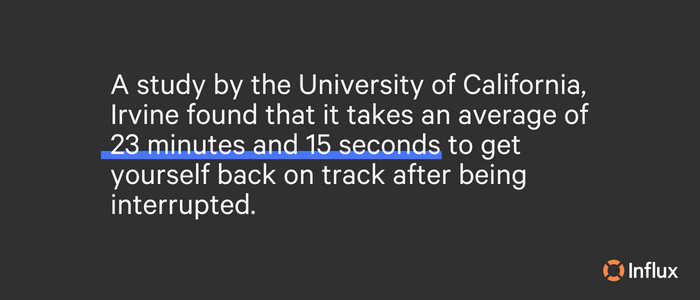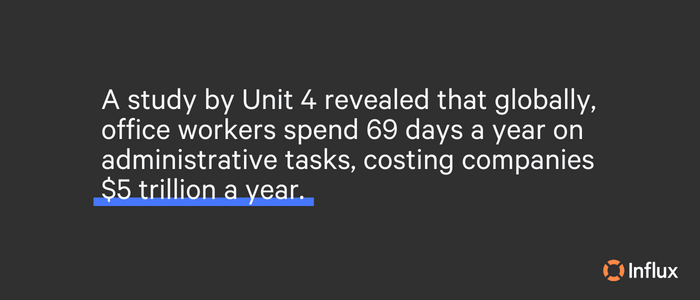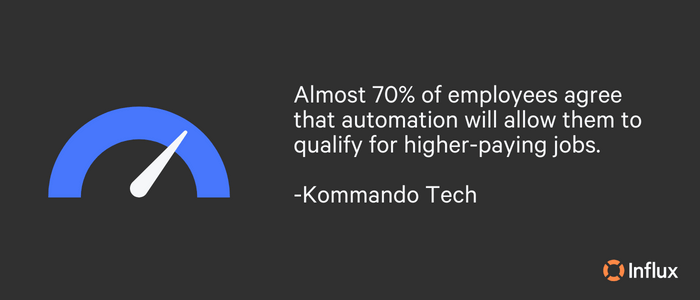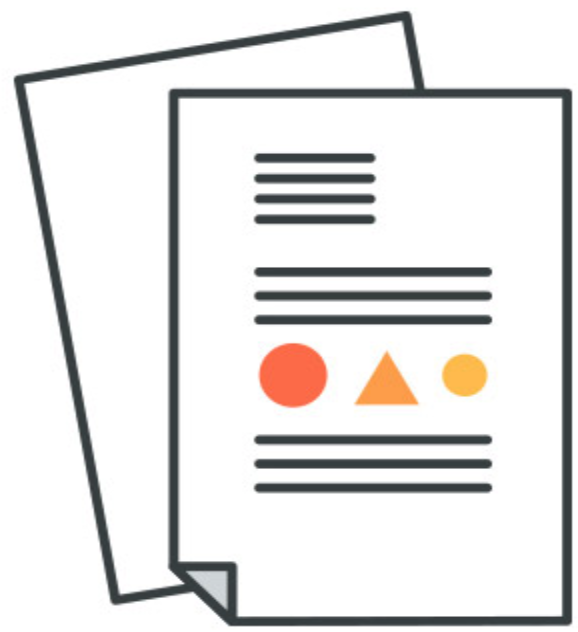Automation is the bridge where technology meets human innovation. Meticulously integrated automation is proven to achieve higher employee engagement rates and leads to faster turnaround times. How can leaders effectively deploy automation for increased productivity? We’ll cover everything; hang tight!
What is employee productivity?
Employee productivity is the quantity of work a single employee can complete in a given time. Many things can impact employee productivity, such as motivation, skills and training, environment, tools/technology, or management. Productivity is typically quantified by output (number of units produced or services delivered) or time (number of hours spent accomplishing a job or project).
To maintain a competitive edge, companies frequently seek to boost employee productivity. Increased productivity results in more output using fewer resources and can also enhance employee work satisfaction and engagement. One of the most significant halts in productivity is completing repetitive tasks. Many businesses turn to automation to help maintain efficiency by minimizing repetitive work.

What is the average productivity of an employee?
The standard workday is 8 hours, but you might be shocked to learn how many hours are actually spent on productive work. According to a study completed by Zippia…
During an 8-hour workday, the average worker only spends 4 hours and 12 minutes actively working.
These surprising findings reveal valuable insights into how much work most employees can realistically accomplish in a single day. However, we cannot expect humans to function like machines. Many distractions – primarily online – can get in the way of deep focus. We can use automation to our advantage to make those precious hours count towards something meaningful. Before that, let’s take a look at what impedes productivity.
What hinders employee productivity?
Many off-task barriers can draw attention away from productive work. A few of the most common productivity killers are:
- Excessive or unnecessarily lengthy meetings
- Multitasking
- Internet browsing (I’m looking at you, social media)
- Gaps in training
- Employee disengagement
- Ineffective performance management
- Non-work related reasons
- Poor communication
- Chit chat
- Smoke/snack breaks
- Procrastination
Short breaks can aid in employee productivity, but for overall efficiency, interruptions should be kept to a minimum or cut off before they eat up too much time.

Four key ways automation promotes employee productivity
Automation in business uses technology to streamline and simplify tasks and processes previously performed manually. It comes in many forms, including robotics, computerization, artificial intelligence (AI), or mechanization. Automation aims to improve efficiency and accuracy while lowering expenses and freeing up human resources to focus on other priorities. How can automation boost employee productivity?
1. Freeing up time for valuable work
According to a study conducted by SmartSheet, more than 40% of respondents said they spend at least a quarter of their workweek on manual, repetitive tasks. And nearly 60% of information workers estimated they’d save at least six hours each week if these aspects of their jobs were automated. Because highly focused work is valuable, minimizing repetitive tasks can clear out some tedious to-do items and replace productive hours with rewarding tasks.
2. Catching and correcting errors
Accurately setting up automation will help to reduce human errors. Compared to technology, humans make significantly more mistakes. AI errors are more predictable than human errors, mainly because they are systematic. Testing automation beforehand can prevent many mistakes.
3. Saving money
Automation can save an average of 10-50% on costs previously associated with manual processing. (Salesforce) Allocate money saved by automation to other vital aspects of the business, such as training, increasing wages, or investing in new tools/technology that improve employee satisfaction.
4. Empowering employees
When teams feel empowered, employee satisfaction and productivity rise. This encouragement inspires individuals to take on new tasks, allows space for innovative ideas, and provides value to the entire team. Reducing repetitive work increases motivation and performance since monotonous tasks aren’t stealing energy.

How to use automation for productivity
Understanding the benefits of automation for employee productivity, aim to apply it anywhere and everywhere it makes sense. Typical tasks to automate include data collection, automated messages across channels, payroll management, etc.
Ask these three questions when determining which processes to automate:
- Is this process required?
- Is this process repetitive?
- Is this process profitable?
Aim to automate processes that satisfy each criterion listed. Once you’ve determined a list of tasks to automate, test them on a small scale to ensure no inefficiencies.
Understanding the impact of automation
Everyone is searching for ways to be more productive. It’s no question that automation has seen a rise in recent years. This follows a rational fear that “machines will take our jobs.” However, “the demand for a more human/local experience is an indirect reaction to automation.” (Make) This results in new opportunities and economic development in other areas.
Is automation taking away jobs? Yes. Conversely, AI is predicted to create 97 million new jobs by 2025. (World Economic Forum) Automation is meant to enhance work, not replace employees. There will always be a need for human elements.

Maximize productivity and profitability with Influx
Saving precious time is essential for teams looking to increase productivity. Influx provides an extra layer of support for employees, allowing them to focus on core competencies. Automation can only do so much. Partnering with a team of experts providing 24/7 support with all management and training can help you successfully scale your operations. Increase efficiency with Influx!

